
Building a New Jungle - The First Phase
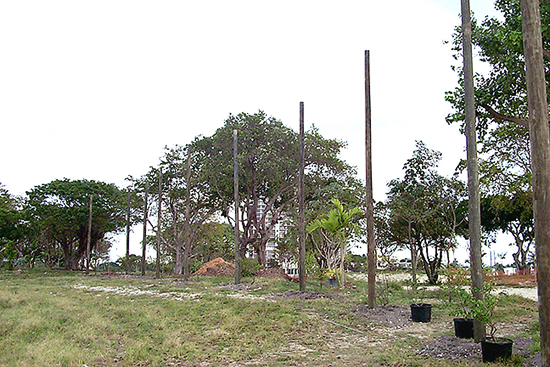
The creation of a lush tropical jungle in two years from a barren semi-tropical site requires the coordination of input from a number of disciplines. Horticulture, Landscape Architecture, Civil Engineering, and Soil Science are a short list of the entities needed for the success of such an undertaking.
Initially a planting plan must be put into place that not only includes the immediate design but also takes into account the natural evolution of a tropical forest and the purpose of the creation of this "Jungle". Every site poses its own unique conditions, many of which only become apparent during the construction or installation process.
The plan to create a "Jungle" on Watson Island is a plan in flux, which allows flexibility in decision making when certain conditions become apparent during the plant installation and growing process. An Integrated Pest Management (IPM) program must be started that will effectively direct cultivation techniques, irrigation, and soil management. The IPM program will determine the long term maintenance and success of the landscape.
The original method behind the creation of the planting plan on Watson Island was to parallel a natural renewing process similar to forest regeneration after a tree-fall or a catastrophic event like that of a destructive hurricane on a natural forest ecosystem. This plan was, in part, based upon the successful reconstruction and replanting of Parrot Jungle and Gardens natural hammock after Hurricane Andrew in 1992. There are many similarities between the two events. The major parallels are full sun, few or no canopy trees, no irrigation system, a foliage understory to replant or create, and very little time to restore or create the "Jungle". It always critical to open (or reopen) a facility for business when the major source of revenue is the paying customer.
Sunlight is a critical component of growing tropical plants. More sunlight means a more colorful garden because blooming is most often stimulated by light in many species of tropical plants. Plants will also tend to grow more compact and symmetrical lending a more balanced look to what otherwise could seem wild and unkempt to the casual onlooker. In a tropical park setting there are other considerations to sunlight that become apparent when considering the comfort of the facilities' visitors. Excessive sunlight can mean excessive heat for visitors and animal inhabitants alike.
Just as in a natural tropical forest, a continuous and high tree canopy can provide temperatures at ground level 15 to 20 degrees F. below the temperature at the point where the sunlight meets the top layer of foliage on the tree canopy. When the tree canopy eventually grows together, a very shaded and comfortable understory is provided, however this means less sunlight for the understory plants and therefore less color. A balance must be maintained between shade and light. The initial installation of the 60 canopy trees on Watson Island was done in a manner that takes this into consideration.
Water is probably the most critical factor in the establishment of trees and other plant material. Even in areas of the original Parrot Jungle where water was only a few inches below ground level, irrigation was significant in promoting rapid plant growth. This was especially apparent when replanting after Hurricane Andrew. All of the areas several feet above the water table had an irrigation system installed immediately after being cleared of debris and replanted. The lower lying area did not have irrigation installed and subsequently it was noticed that the plant material was not growing as fast as that of the irrigated areas. Irrigation was then installed and the resultant plant growth was satisfactory.
There is no fresh water found underneath Watson Island. Municipal water is the only source for irrigation. Mulching and the use of compost as horticultural topdressing will be critical as a method to conserve water. The indigenous soil on the site is mostly sand with a small organic component. The compost adds more organic matter to the sand and will increase moisture retention. The microorganisms in the compost also act as a nutrient sink, further benefiting the plants and trees. The mulch will lower the temperature to the soil thereby reducing soil evaporation. Mulch also cuts down on weed problems in sunny areas.
Much of the tree canopy material that is being installed on Watson Island can be placed into one of two categories, long-lived and short-lived. Similar to what happens when a light-gap occurs after a tree falls to the ground; the first plants to colonize the newly lighted site are fast growing, short-lived trees or shrubs. These plants are eventually taken over and shaded out by slower growing but longer-lived trees. The fast growing trees being planted at Watson Island are mostly Cecropia, Ceiba, and Pachira species. At Parrot Jungle after Hurricane Andrew, Trema micrantha, the Florida Trema was an important fast growing tree species utilized for a temporary short-lived canopy.
There is also a horizontal planting component. The different pathways, exhibits, and buildings need to be screened from each other. While allowing for the more colorful and ornamental plants to be viewable by the Park's visitors, another more dense foliage barrier must be maintained behind and between the more tender and sensitive ornamental plants. This dense foliage must be cold and wind resistant. It must also provide a visual barrier in case inclement weather or insect problems damage the ornamental plants. Some of these barrier plants are Clusia rosea, the Pitch Apple, Cocoloba diversifolia, Pigeon Plum, Calophyllum sp., and Chrysophyllum oliviforme, Satin Leaf.



 About Theme Parks, Zoos & Tropical Design
About Theme Parks, Zoos & Tropical Design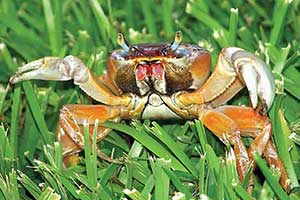 Integrated Pest Management in a Zoological Theme Park, Wing Beats the Journal of the American Mosquito Association
Integrated Pest Management in a Zoological Theme Park, Wing Beats the Journal of the American Mosquito Association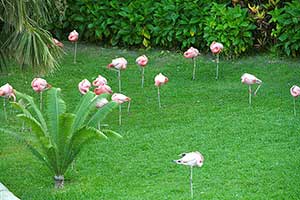 The Environmental Lawn
The Environmental Lawn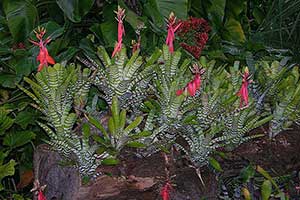 Design with Integrated Pest Management
Design with Integrated Pest Management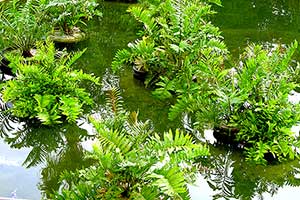 Creating Islands in Aquatic Ecosystems
Creating Islands in Aquatic Ecosystems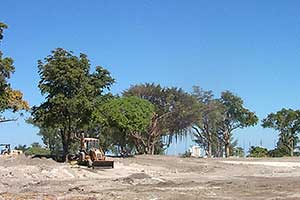 Building a New Jungle - Contouring the Site and Creating a Tree Canopy
Building a New Jungle - Contouring the Site and Creating a Tree Canopy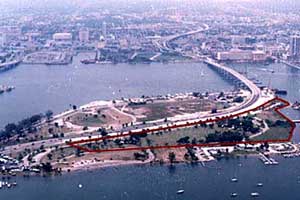 Watson Island - Remaking History
Watson Island - Remaking History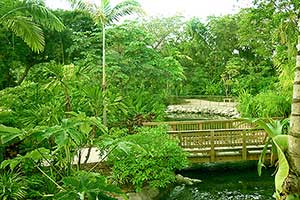 The Gardens at Parrot Jungle Island, The First Year
The Gardens at Parrot Jungle Island, The First Year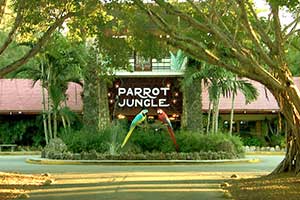 Parrot Jungle & Gardens
Parrot Jungle & Gardens